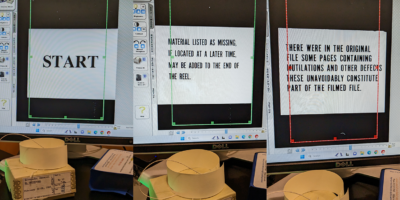By Sarah Hildebrand
I arrived at my prison classroom to find my students vigorously discussing a peer who identified as transgender. While my students were often culturally sensitive and compassionate, that day they were not.
As an educator, I sometimes employ a risky strategy of using my students’ organic conversations to jump-start our class discussions. It’s my way of meeting students where they are and of showing how coursework intersects with their everyday lives. Sometimes these impromptu lessons excel in blurring these boundaries. After the 2016 election, which left many of my Lehman students reeling, we used the candidates’ campaigns as case studies in the power of rhetoric and our discussion as a means to process an incomprehensible event.
When I walked into my prison classroom that day, I decided to take this risk. I didn’t feel I could ethically ignore their conversation, and was confident we could connect it to previous course discussions around gender and privilege. Rather than diving directly into my planned lesson, I leapt into their conversation to ask why they were so upset by this person’s mere existence on the prison campus—and why they were angered by transgenderism in general.
They responded emotionally, making passionate, sweeping claims. And this is where I made my mistake.
This is where I should’ve brought up the modes of argumentation we had been discussing all semester: ethos, logos, pathos, and the principles behind crafting strong arguments. We should’ve made lists on the board and analyzed their claims one by one. We should’ve thought critically about the meaning of language—how one word can become so divisive. But I wasn’t thinking clearly enough to be so goal-oriented; I was emotional, too.
So instead I dove deeper into murky waters. I presented them with a hypothetical question, asking: “What if, next class, I came in and told you that *I* identified as transgender, and would prefer that from now on you use different pronouns to address me?” This is another risky tactic I use in my college classrooms. I bank on my students’ respect for me to at least momentarily trouble their points of view.
This was the first time I know of that it didn’t work. In fact, it completely backfired, causing them to actively lose respect for me and become more entrenched in their beliefs. One student shouted angrily, “I’d walk out and never come back!”
I tried to press him. “Why?” I asked. “What would have changed about me or our relationship that would cause you to do that?”
“It’s just wrong,” he responded.
I again tried to get him to elaborate. “How is it wrong? Why would you feel so personally affected by my identity?” I may have even asked, “Why are you so angry about this?”
He wasn’t the only one. It quickly became clear that I was not on the majority side of this debate. Many of the men were talking over each other and me, calling out jokes, slurs, or affect-laden arguments.
Finally, nearly masked by the voices of his peers, a student sitting at the very front of the class whispered to me, “You should really give up on this one. You’re not going to get anywhere.”
I still feel guilty that I listened.
This experience had several effects on me. First, it made me check my own privilege. It was sometimes hard being a cis-woman in this setting, but it could’ve been even harder. Second, it made me reflect on my pedagogical practice and the many forces that shape a course discussion.
My incarcerated students fell at varying points on the political spectrum. While this frequently occurs in any classroom, the difference here was that, regardless of their individual point of views, they conformed to a particular variety of herd mentality that exists as a means of survival in carceral spaces.
While some clearly had strong anti-transgender feelings, I’m certain there were others who didn’t. But those students chose to remain silent, and I at least partially understand why—they feared for their physical safety if they were to be outspoken on the topic. I understand this, because I started to fear for mine.
While there was often anger in our classroom, it usually stemmed from a handful of individuals at a time and was directed at the larger system of mass incarceration or sometimes at each other. Tensions run high in prisons. These men don’t just work, live, and eat together like on any residential college campus—they are caged together. There’s conflict amongst them that filters into our classroom. There’s anger that has nowhere to go.
This time it was directed at me.
Undoubtedly, I have made other students in other classrooms angry. But this anger felt different. It was palpable, embodied, explosive. I think maybe it was dangerous. It silenced me.
Sometimes taking risks and teaching extemporaneously pays off and sometimes it makes you realize your own limitations. One thing I often forget as a teacher is that no conversation is ever truly finished. There are issues that can’t be solved in one class period and opportunities to return to them later. I could have slowed this conversation down in ways that would’ve allowed me to better navigate it. Instead, I let my classroom get chaotic and by the next class had let the issue slide.
Rather than stop the conversation altogether, I should’ve just pressed pause. While our oral communication had clearly broken down, there are others ways to share ideas. This being a composition course, I could’ve come up with a quick in-class writing activity, prompting them to articulate their arguments and feelings in a different way. I could’ve collected these, read them outside of class, and returned the next week with a more organized plan for connecting this issue to course material and creating a calmer classroom environment. By asking them to write for me rather than to perform in front of their peers, I also would’ve allowed for more voices and perspectives to be heard.
Would the lesson I came up with ultimately have changed their minds? I’m not sure. But it would’ve been another risk worth taking.










Leave a Reply